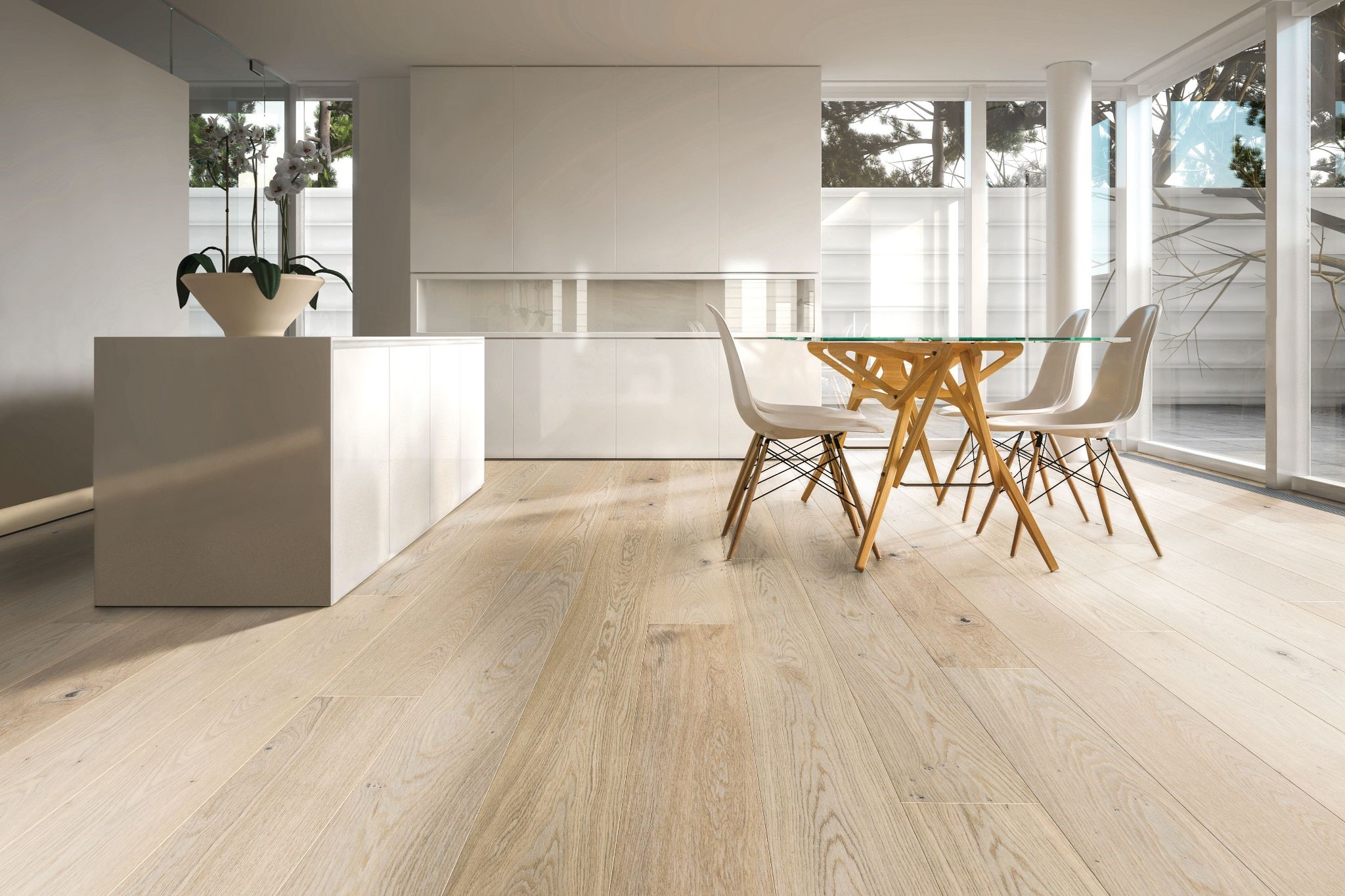In contemporary construction and interior design, engineered wood flooring is highly favored for its aesthetic allure, durability, and cost-efficiency. However, beyond these surface-level advantages, the environmental impact of engineered wood flooring is a crucial aspect that merits thorough exploration. This article delves into the sustainability of engineered wood flooring, examining its resource management and overall environmental footprint.
Table of Contents
ToggleResource Efficiency
One of the primary environmental benefits of engineered wood flooring is its efficient use of timber. Unlike solid hardwood flooring, which requires thick planks of wood, engineered wood utilizes a thin veneer of finished wood on top of less expensive, sustainably sourced plywood or recycled wood fibers. This means that the same amount of wood used in solid hardwood floors can produce significantly more square footage of engineered flooring.
This efficiency is particularly important given the global need to reduce logging and preserve natural forests. By maximizing the use of each tree and incorporating recycled materials, engineered wood flooring minimizes waste and reduces the demand for virgin timber.
Reduced Environmental Footprint
The manufacturing process of engineered wood flooring also contributes to its reduced environmental footprint.
Moreover, engineered wood flooring can be more energy-efficient in production compared to solid wood flooring. The process of creating the veneer and pressing the layers together often requires less energy than milling solid wood planks, thus lowering the carbon footprint associated with its manufacture.
Indoor Air Quality and Health Benefits
Many engineered wood products are sealed with low-VOC or VOC-free finishes, reducing the potential for indoor air pollution.

Longevity and Life Cycle
The longevity of engineered wood flooring is another factor contributing to its sustainability. The ability to sand and refinish the surface layer extends the life of the flooring, unlike many other flooring types that might need complete replacement once worn.
Furthermore, the end-of-life management of engineered wood flooring can be more environmentally friendly. Wood is a biodegradable and potentially recyclable material. When removed, engineered wood flooring can frequently be reused or recycled, promoting a circular economy and minimizing waste in landfills.
Challenges and Considerations
Despite these advantages, there are environmental challenges associated with engineered wood flooring. The adhesives found in certain engineered wood products may include formaldehyde or other chemicals, potentially affecting both the environment and health. However, the industry has been moving towards more environmentally friendly adhesives and finishes to mitigate these concerns.
Moreover, the transportation of engineered wood flooring, especially if sourced from overseas, can add to its carbon footprint. Thus, choosing locally manufactured or sourced engineered wood can further reduce its environmental impact.
Conclusion
Engineered wood flooring presents a sustainable flooring solution that effectively balances aesthetic appeal, cost-effectiveness, and environmental responsibility. Its resource-efficient production, potential for using recycled materials, and alignment with sustainable forestry practices underscore its role in modern eco-friendly construction. As the industry continues to evolve, ongoing improvements in production processes and materials are expected to enhance the sustainability of engineered wood flooring even further, solidifying its place in environmentally conscious design.

